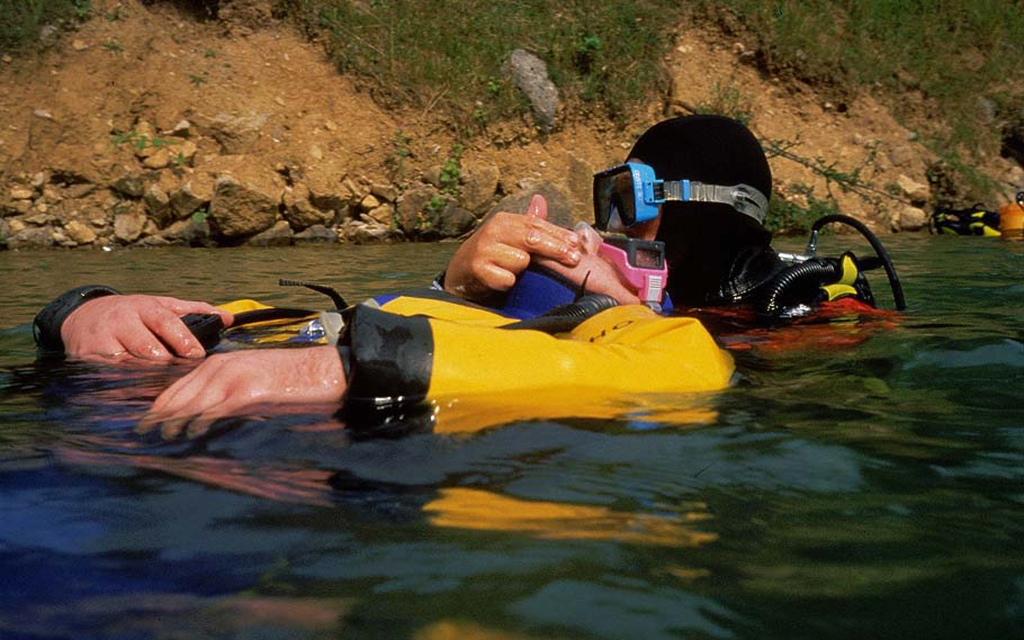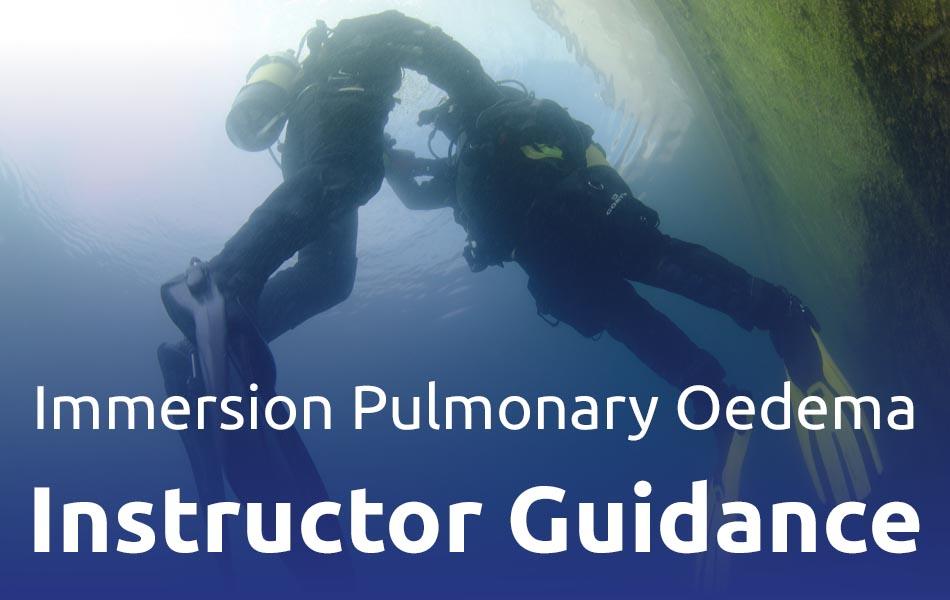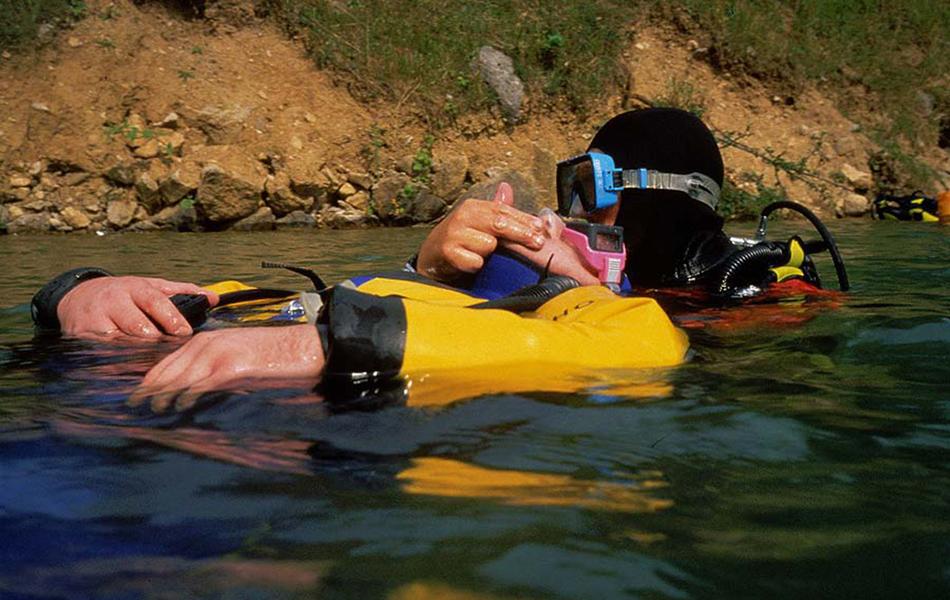
In recent years, UK coroners have recorded immersion pulmonary oedema (IPO) as the cause of death in several divers and snorkellers. As Dr Peter Wilmshurst reports, IPO probably causes more deaths in scuba divers than any other medical condition.
If a person has had IPO once, their risk of it recurring is considerably increased. Some deaths were of divers who previously survived milder episodes of IPO but continued to dive, sometimes despite medical advice to stop.
IPO is not the result of being unfit. It occurs in triathletes and open water swimmers. For example, the Vanbro river swimming competition in Sweden has about 12,000 competitors annually. Each year 50-60 swimmers, about 1 in 200 competitors, get IPO and most are treated with ventilator support in a mobile medical unit (the nearest hospital is 70 km away).
IPO also occurs in 5% of fit young men during the selection process to become US Navy SEALS. Similar high rates are reported in recruits to the Israel Defence Force during swimming trials. Both countries report that military recruits that had IPO once are at increased risk of getting it again. The research in Israel showed that drinking excess fluid before a swim increases the risk.
IPO has only been recognised for about 40 years, because at post mortem examinations the findings are very similar to those of drowning. In both IPO and drowning the lungs are heavy and waterlogged so that when they are cut open, the lungs are filled with bloodstained froth. In drowning the fluid in the lungs is inhaled but in IPO the fluid has passed out of the lung blood vessels (pulmonary capillaries) into the lung air sacs (alveoli).
Causes of IPO
IPO occurs because immersion causes two changes that have major effects on the pressure difference between the alveoli and capillaries surrounding them. The hydrostatic effect of immersion pushes blood from the limbs to the chest to increase the pressure in the capillaries and, at the same time, because the lungs are below the level of the water surface, there is often a more negative pressure required to draw air into the lungs. The combination of increased capillary pressure and more negative airway pressure in the alveoli increases the pressure gradient driving fluid from the pulmonary capillaries into the alveoli.
The increased volume of fluid in the alveoli impedes gas exchange, so that the amount of oxygen in the blood and hence brain decreases and the amount of carbon dioxide increases. The affected casualty becomes breathless and starts to cough. They may cough up froth, which can be white of blood-stained and hence pink. They may have some chest tightness. Unless the casualty can be removed from the water, eventually the degree of hypoxia is such that the casualty becomes unconscious and drowns or they have a cardiac arrest.
Risk factors for IPO
A number of factors increase the risk of a diver or swimmer suffering IPO. The most important is individual predisposition, i.e. the person had it before. Other factors related to the individual are presence of hypertension or heart disease, which cause the individual to have a high pulmonary capillary pressure even before they entered the water. The incidence of IPO increases with age, so that risk of IPO is about 13 times greater in those over 60 than in those under 30. For reasons that are not understood, the incidence of IPO is about 9 times greater in women than men.
The incidence of IPO is also affected by environmental and circumstantial factors. Colder water temperature, exertion, emotional stress and increased fluid intake before immersion all increase pulmonary capillary pressure to cause more fluid to be pushed out of the capillaries into the alveoli. An important message for divers is not to over hydrate before diving.
Some medical treatments can increase the risk of IPO by increasing pulmonary capillary pressure. In fact a recent inquest found that medication taken by the diver contributed to her death from IPO by increasing fluid retention. Illegal drugs may increase the risk and, in another recent case, toxicology revealed use of cocaine by the deceased diver. Cocaine increases blood pressure and pulmonary capillary pressure.
Certain types of breathing apparatus require greater negative pressures when breathing and therefore their use reduces the pressure in the alveoli to effectively suck fluid in from the pulmonary capillaries.
Snorkeller and diver risks for IPO
Some types of snorkel have been shown to cause an increase in negative airway pressure. Full face masks with built in snorkels are a particular risk by increasing negative airway pressure and causing carbon dioxide retention. A recent inquest found that equipment of that type contributed to death from IPO.
There are simple rules about airway pressures with scuba equipment.
If a diver is using a single stage open circuit demand valve (regulator) and the mouth piece is above the level of the lungs, the diver is breathing with negative airway pressure and is at increased risk of IPO. That situation is most frequent when the diver is upright in the water and usually when ascending.
If a diver is using a rebreather and the counter-lung is above the level of the lungs, the diver is breathing with negative airway pressure and is at increased risk of IPO. With a back-mounted counter-lung the risk is greatest when the diver is swimming horizontally. Swimming horizontally is often the largest part of a dive for an amateur diver. Quite often divers who had no problem when using open circuit, experience IPO after starting to use a rebreather with a back-mounted counter-lung. A number of experienced divers have died from IPO soon after starting to use a rebreather. A front-mounted counter-lung poses less risk but the French Navy have shown that, even with a front-mounted counter-lung, IPO can occur in some circumstances.
Danger signs of IPO
A diver who becomes breathless as a result of IPO may mistakenly believe that their equipment is not working properly. If a diver switches their demand valves or uses a buddy’s secondary air supply, or if a diver with a re-breather is purging their system, it may indicate the onset of IPO. Coughing or rapid respiration, which may be obvious from the exhaled bubbles, may also indicate IPO.
When a swimmer or diver has breathlessness or other features of IPO, the immediate action must be to get them out of the water. That immediately reverses the hydrostatic effect of immersion – so blood moves out of the chest into their limbs, which reduces the pressure in alveolar capillaries. A diver who is breathless at depth must not be allowed to surface alone. The ascent can cause a rapid reduction in the partial pressure of oxygen in the blood and brain and the diver may become unconscious in the short time it takes for them to surface. Ignore safety stops and get out of the water.
Treatment following an IPO incident
Provided that the casualty is conscious when out of the water, they should be kept still sitting in an upright position, which improves gas transfer. They should be kept warm in order to reduce vasoconstriction. It is essential to be given 100 per cent oxygen, if it is available. The casualty should be taken to hospital, where treatment with drugs and, in severe cases, mechanical ventilation, may be required to get the oedema fluid out of their lungs.
A diver who has had IPO is at risk of further episodes. In most cases, a return to diving is too great a risk. However, investigation is important because occasionally the individual has a cardiac problem that may present other risks to their health, including a risk of death. Therefore, every diver who has suffered IPO or has had symptoms that might have been the result of IPO, should be reviewed by a diving medical referee or cardiologist with knowledge of diving medicine. Very occasionally the investigations reveal a medical condition predisposing to IPO that can be corrected to allow an affected individual to return to diving safely.
There is on-going research into the various factors causing IPO and the mechanisms involved.
Safety guidance on Immersion Pulmonary Oedema (IPO)
IPO can result from any immersion in water and can affect snorkellers, open water swimmers, triathletes etc. not just scuba divers. BSAC publishes diver guidance for IPO and snorkeller guidance for IPO.





